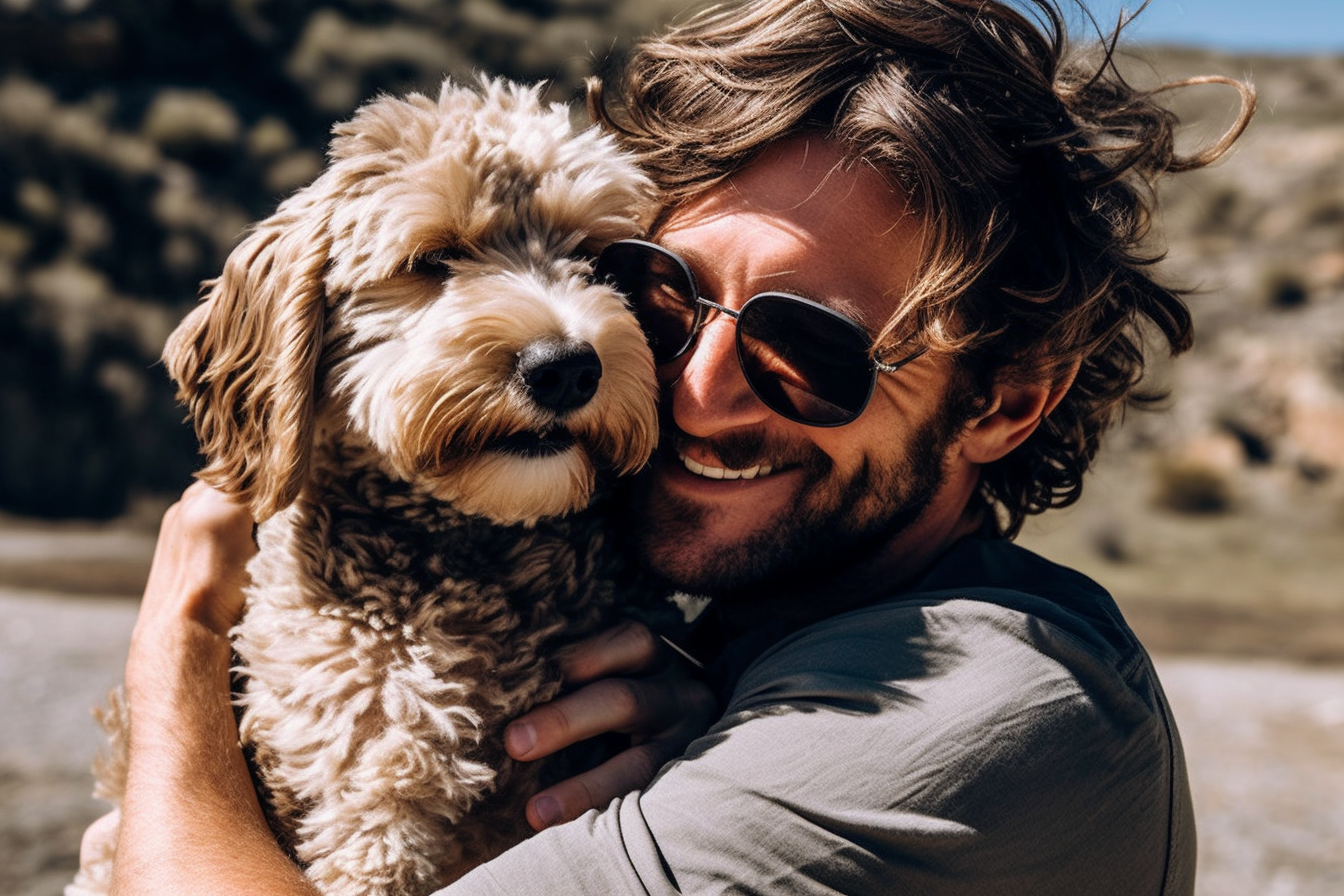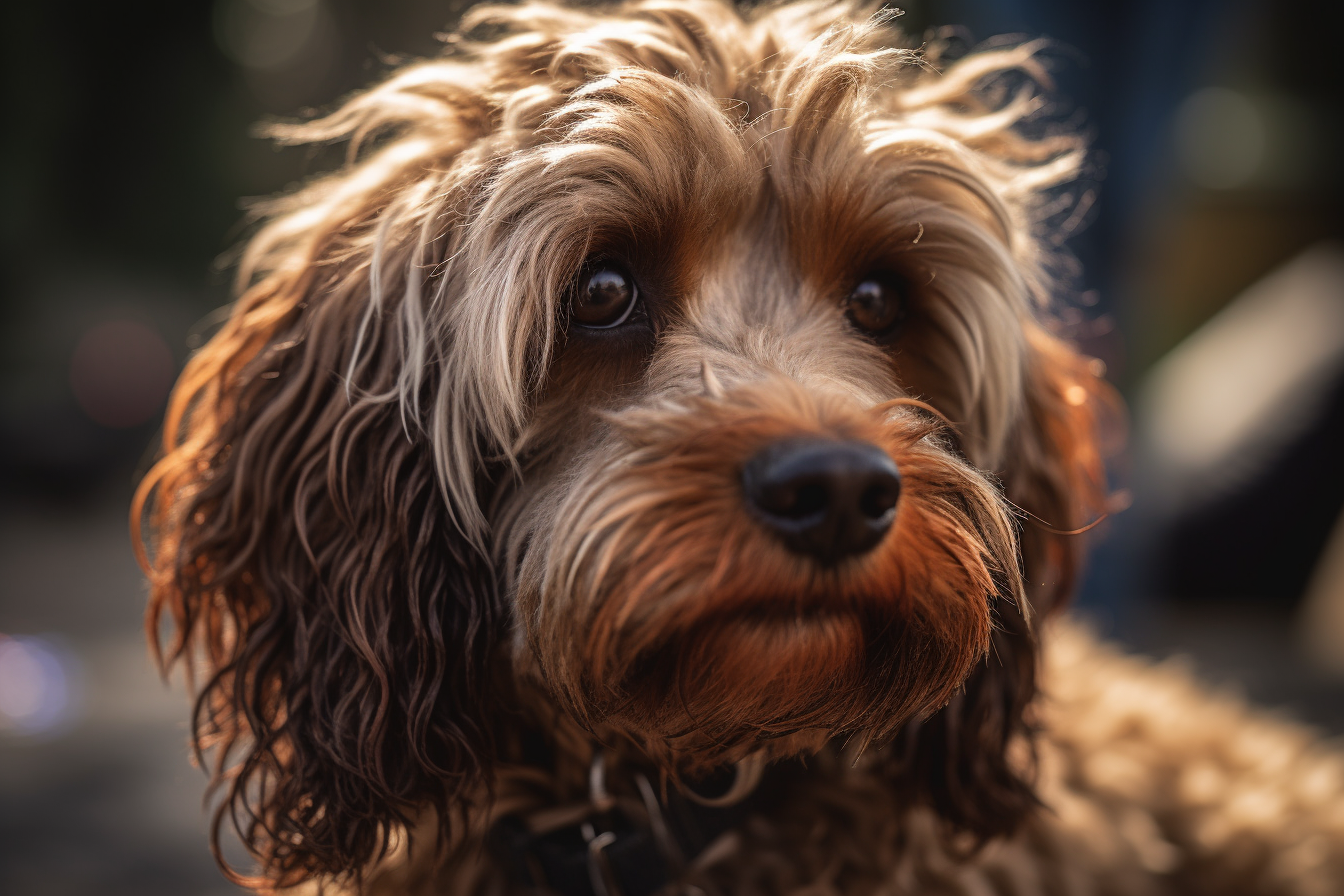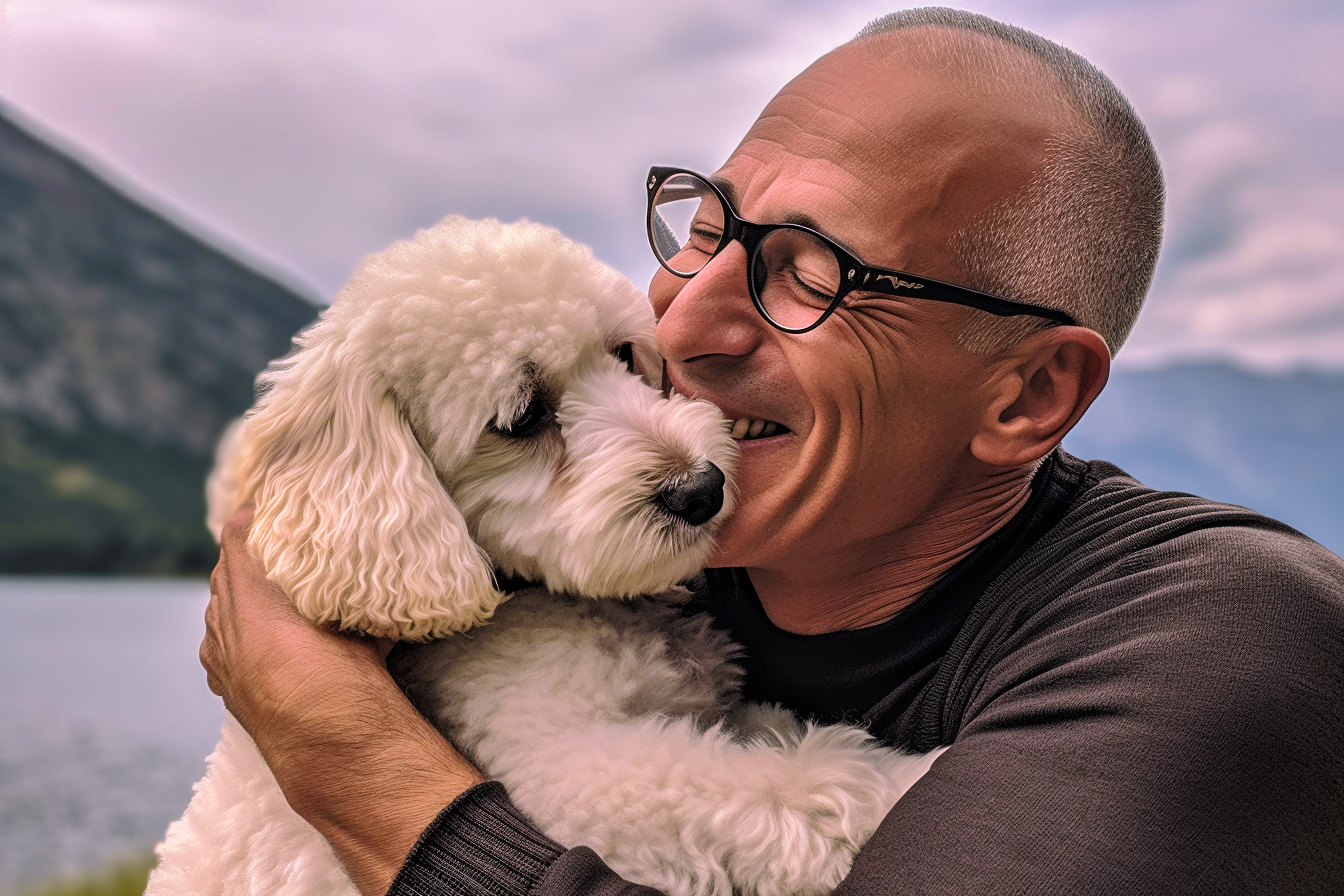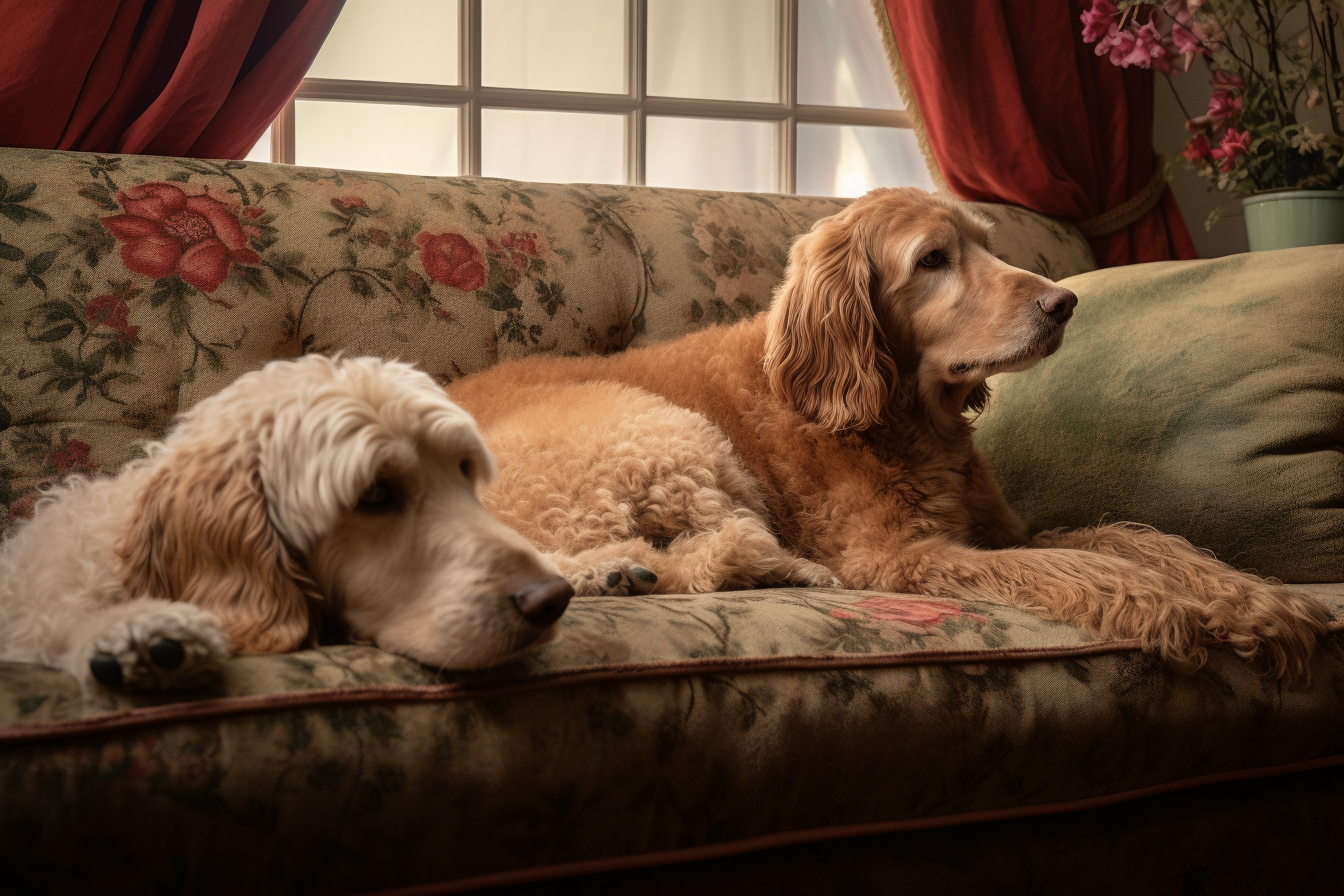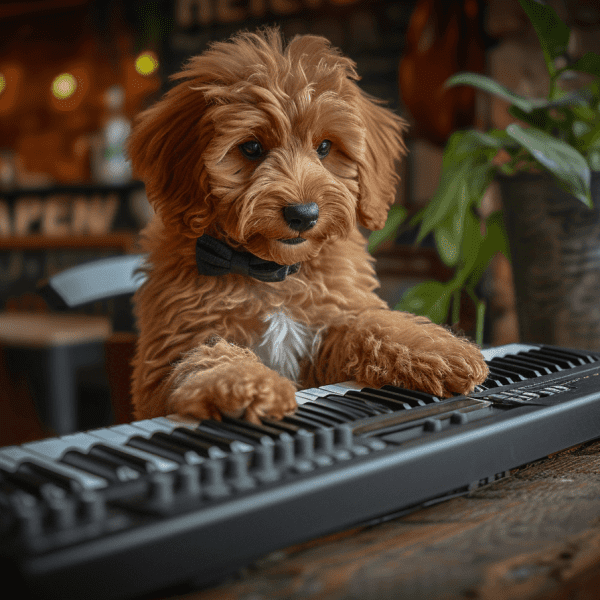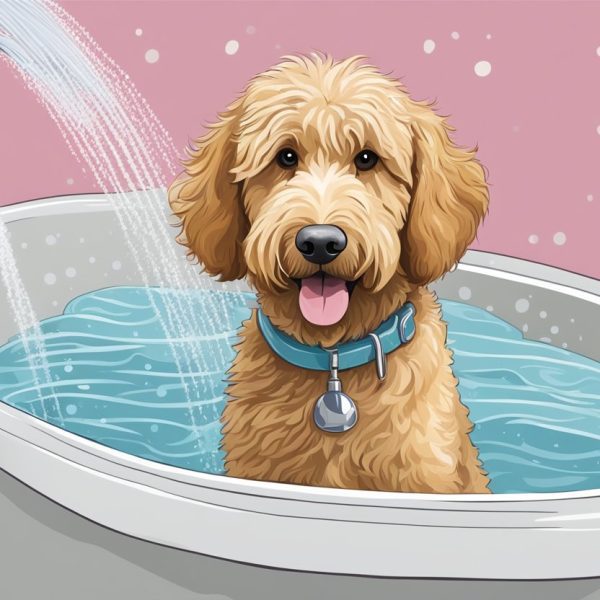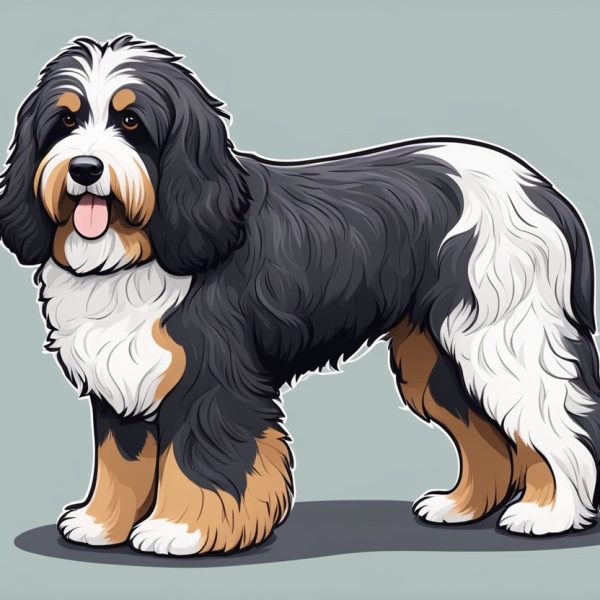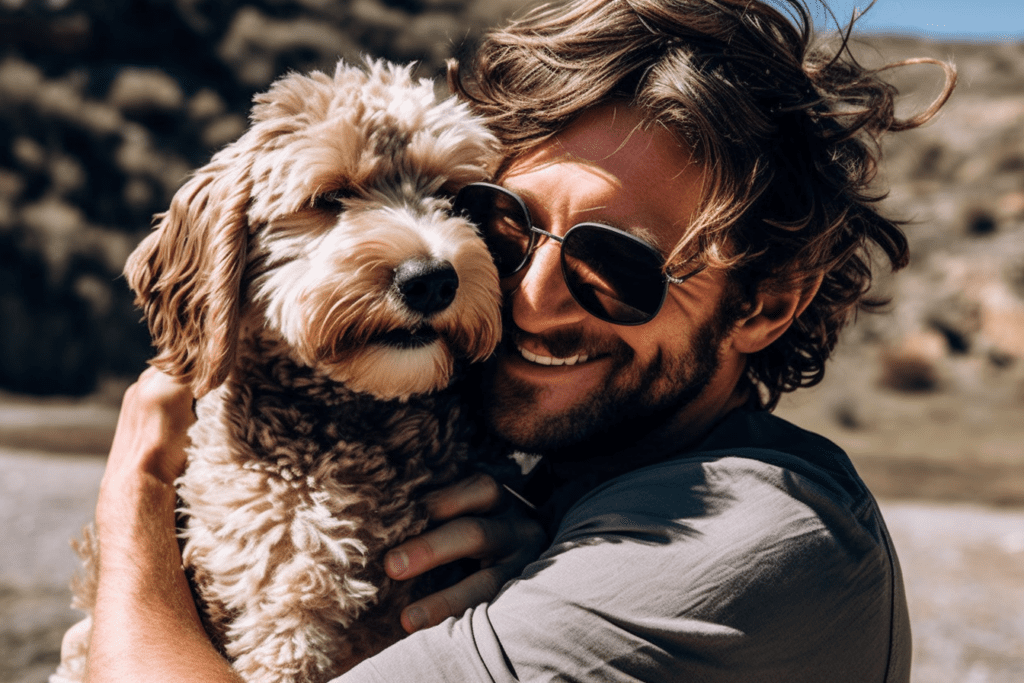
Introduction
Hello fellow poodle lover! If you’re looking for a lovable, friendly, and intelligent furry companion, look no further than the Australian Labradoodle Mini. These delightful little dogs are packed with personality, making them the perfect addition to any family. In this article, we’ll dive into everything you need to know about this charming breed, from their fascinating history to their unique physical characteristics and beyond.
The purpose of this article is to provide you with a comprehensive understanding of the Australian Labradoodle Mini so that you can decide if it’s the right breed for you. We’ll also share some practical tips on training, care, and finding the perfect Australian Labradoodle Mini for your home. So, without further ado, let’s dive into the wonderful world of these pocket-sized companions!
History of the Australian Labradoodle Mini
Now that we’ve covered the basics, let’s take a trip back in time and explore the origins of the Australian Labradoodle Mini. These adorable dogs have quite an interesting history, and it all began with the desire to create a hypoallergenic guide dog for individuals with allergies.
A. Origins of the breed
The Australian Labradoodle Mini traces its roots back to the 1980s when an Australian breeder named Wally Conron had the brilliant idea to cross a Labrador Retriever and a Standard Poodle. The goal was to combine the friendly, intelligent, and trainable nature of the Labrador with the low-shedding, hypoallergenic coat of the Poodle. The result was a breed that became known as the Labradoodle.
B. Breed development and goals
Over time, breeders in Australia continued to refine the Labradoodle, incorporating other breeds such as the English and American Cocker Spaniels, the Irish Water Spaniel, and the Curly Coated Retriever. The aim was to create a breed with a consistent size, appearance, and temperament, while maintaining the hypoallergenic qualities that made it so appealing. This led to the development of the Australian Labradoodle, a separate and distinct breed from the original Labradoodle.
The Australian Labradoodle Mini is a smaller version of the Australian Labradoodle, bred down in size to create a more compact and portable companion. Despite their smaller stature, these minis still pack a punch when it comes to personality and charm!
C. The role of the Australian Labradoodle Association
As the Australian Labradoodle grew in popularity, the need for a governing body to oversee the breed’s development became clear. The Australian Labradoodle Association (ALA) was established to maintain breed standards, promote responsible breeding practices, and provide resources for both breeders and owners alike. The ALA has played a crucial role in the success and recognition of the Australian Labradoodle Mini as a wonderful, unique breed.
So there you have it, a brief but fascinating look at the history of the Australian Labradoodle Mini. As we continue through this article, you’ll learn more about what makes this breed such a delightful addition to the lives of poodle enthusiasts everywhere.
Physical Characteristics
One of the most endearing aspects of the Australian Labradoodle Mini is its unique and adorable appearance. In this section, we’ll take a closer look at their physical characteristics, including size, weight, coat types, colors, and other features that make them stand out in the world of dog breeds.
A. Size and weight
As the name suggests, the Australian Labradoodle Mini is a smaller version of the Australian Labradoodle. These pint-sized pups typically stand between 14 to 16 inches tall at the shoulder and weigh between 15 to 25 pounds. Their compact size makes them perfect for apartment living and easy to take along on all sorts of adventures.
B. Coat types and colors
One of the most distinctive features of the Australian Labradoodle Mini is its beautiful, hypoallergenic coat. These dogs have three main coat types: wool, fleece, and hair. The wool coat is dense, curly, and non-shedding, while the fleece coat is wavy, soft, and also non-shedding. The hair coat is the least common and can be wavy or straight, with some minimal shedding.
Australian Labradoodle Minis come in a wide range of colors, from classic shades like cream, chocolate, and black to more unusual hues like red, apricot, and silver. They can also have parti-colored coats, which feature a mix of two or more colors, or phantom coats, which display a specific pattern of color markings.
C. Appearance features
These little dogs have a charming and expressive face, with large, almond-shaped eyes that seem to sparkle with intelligence and curiosity. Their ears are medium-sized and hang down, framing their face in the most delightful way. The Australian Labradoodle Mini’s body is well-proportioned and athletic, reflecting their energetic and playful nature.
Overall, the Australian Labradoodle Mini is a truly eye-catching breed with a unique appearance that captures the hearts of dog lovers everywhere. In the next sections, we’ll explore their equally enchanting temperament and personality, as well as important information on their health, training, and care. So, stay tuned and let’s continue our journey into the captivating world of these pocket-sized companions!
Temperament and Personality
Now that we’ve covered the physical aspects of the Australian Labradoodle Mini, it’s time to delve into their temperament and personality. These little dogs are full of life, love, and laughter, making them the perfect companions for a wide variety of households.
A. General temperament
Australian Labradoodle Minis are known for their friendly, outgoing, and affectionate nature. They love being around people and have a knack for making friends wherever they go. These dogs are also intelligent and eager to please, which makes them highly trainable and well-suited to various roles, from therapy and assistance work to competitive dog sports.
B. Socialization and adaptability
One of the key traits of the Australian Labradoodle Mini is its adaptability. These dogs are just as comfortable cuddling on the couch with their favorite human as they are exploring the great outdoors. They can adjust well to different living environments, from bustling city apartments to peaceful rural homes.
Early socialization is important for all dogs, and the Australian Labradoodle Mini is no exception. Proper socialization helps ensure that these pups grow up to be well-rounded, confident, and comfortable in a variety of situations. They tend to get along well with children and other pets, making them excellent family dogs.
C. Energy levels and exercise needs
Despite their small size, Australian Labradoodle Minis have a moderate to high energy level and require regular exercise to keep them happy and healthy. A daily walk or two, along with some playtime and mental stimulation, will help keep your Mini’s mind and body in tip-top shape. These dogs also enjoy activities like fetch, agility, and even swimming.
While they may be small, the Australian Labradoodle Mini has a big heart and an even bigger personality. They’re sure to bring joy, laughter, and lots of love to any home lucky enough to have them. In the next sections, we’ll explore important information about their health, training, and care, so you can be well-prepared to welcome one of these delightful dogs into your life.
Health and Lifespan
When it comes to the Australian Labradoodle Mini, maintaining their health and well-being is a top priority for any responsible pet owner. In this section, we’ll discuss common health issues, life expectancy, and the importance of regular checkups and vaccinations to ensure your furry friend stays happy and healthy throughout their life.
A. Common health issues
While the Australian Labradoodle Mini is generally a healthy breed, there are a few health concerns that potential owners should be aware of. Some common issues include:
- Hip and elbow dysplasia: Abnormal development of the hip or elbow joints, which can lead to arthritis and mobility issues.
- Eye Conditions: Vision can be impacted by conditions like progressive retinal atrophy (PRA) or cataracts.
- Allergies: Skin allergies and sensitivities are not uncommon in this breed and can be managed with proper care and attention.
- Ear infections: Due to their floppy ears, Australian Labradoodle Minis may be prone to ear infections, which can be prevented with regular cleaning and checkups.
Keep in mind that responsible breeding practices and genetic testing can help minimize the risk of these issues. Always choose a reputable breeder who prioritizes the health and well-being of their dogs.
B. Life expectancy
The Australian Labradoodle Mini has a relatively long lifespan, with most living between 12 to 15 years. Of course, providing your pup with a loving home, a balanced diet, regular exercise, and proper veterinary care can help ensure they live a long, happy life.
C. Importance of regular checkups and vaccinations
Routine veterinary checkups are essential for maintaining the health of your Australian Labradoodle Mini. Regular visits to the vet can help identify potential health issues early and ensure your dog stays up-to-date on important vaccinations.
In addition to regular checkups, make sure to keep an eye on your Mini’s weight, dental health, and overall well-being. If you notice any changes in behavior or appearance, don’t hesitate to consult your veterinarian.
By being proactive about your Australian Labradoodle Mini’s health, you’ll help ensure they remain a happy, loving companion for years to come. In the next sections, we’ll discuss training, care, and finding the right Australian Labradoodle Mini for your family, so you can be fully prepared to welcome one of these delightful dogs into your home.
Training and Care
Taking care of an Australian Labradoodle Mini involves more than just meeting their basic needs. Ensuring they receive proper training, grooming, and nutrition will help them thrive as beloved family members. In this section, we’ll provide you with some essential tips on training and care, so you can confidently raise a well-mannered and happy Australian Labradoodle Mini.
A. Training methods and effectiveness
Thanks to their intelligence and eagerness to please, Australian Labradoodle Minis are highly trainable dogs. They respond best to positive reinforcement methods, which involve rewarding good behavior with treats, praise, and affection. Here are some training tips to keep in mind:
- Start early: Begin training your Australian Labradoodle Mini as soon as you bring them home. Young puppies are like sponges, ready to soak up new information and learn quickly.
- Be consistent: Use consistent commands and training techniques, so your dog understands what’s expected of them.
- Keep sessions short and fun: Training sessions should be short, engaging, and enjoyable for both you and your dog. This will help maintain their interest and make learning a positive experience.
- Socialize: Expose your Australian Labradoodle Mini to various situations, people, and other animals to help them become well-adjusted and confident adults.
B. Grooming requirements
The hypoallergenic coat of the Australian Labradoodle Mini requires regular grooming to keep it clean, healthy, and free of mats. Here’s what you need to know about grooming your Mini:
- Brushing: Depending on the coat type, you’ll need to brush your dog every few days to once a week. This will help prevent tangles and keep their coat looking its best.
- Bathing: Bathe your Australian Labradoodle Mini every 4 to 6 weeks, or as needed. Use a gentle, dog-specific shampoo to avoid irritating their skin.
- Haircuts: Your Mini will need regular haircuts to keep their coat manageable and comfortable. This can be done by a professional groomer or at home with the right tools and guidance.
- Nail trimming: Trim your dog’s nails regularly to prevent overgrowth and discomfort.
- Ear cleaning: Clean your Mini’s ears regularly to reduce the risk of ear infections.
C. Dietary considerations
Proper nutrition is essential for the overall health and well-being of your Australian Labradoodle Mini. Feeding them a balanced, high-quality dog food will ensure they receive all the necessary nutrients for growth, development, and maintenance. Here are some dietary tips:
- Choose a high-quality dog food: Look for a dog food that meets the nutritional needs of your Australian Labradoodle Mini’s age, size, and activity level.
- Monitor portion sizes: Overfeeding can lead to obesity, which can cause numerous health issues. Follow the feeding guidelines on the dog food packaging and consult your vet if you’re unsure about portion sizes.
- Treats in moderation: While treats can be a useful training tool, they should be given in moderation to avoid weight gain and potential health problems.
By providing your Australian Labradoodle Mini with proper training, grooming, and nutrition, you’ll be well on your way to raising a happy, healthy, and well-behaved companion. In the next sections, we’ll discuss how to choose the right Australian Labradoodle Mini for your family and factors to consider before bringing one home.
Choosing the Right Australian Labradoodle Mini for Your Family
With their charming personalities and adorable looks, it’s no wonder that you might be considering adding an Australian Labradoodle Mini to your family. In this section, we’ll discuss some important factors to consider before bringing one home, as well as tips for finding a responsible breeder or rescue organization.
A. Factors to consider
Before committing to bringing an Australian Labradoodle Mini into your life, it’s important to consider whether this breed is a good fit for your lifestyle and needs. Some factors to think about include:
- Space: While they’re small and can adapt well to apartment living, Australian Labradoodle Minis still need room to play and exercise. Make sure you have adequate indoor and outdoor space for your new furry friend.
- Time commitment: These dogs require regular grooming, exercise, and mental stimulation. Be prepared to devote time each day to meet their needs and provide companionship.
- Allergies: Although they are hypoallergenic, no dog breed is entirely allergy-free. Spend time around Australian Labradoodle Minis to see if you or your family members have any allergic reactions before committing to ownership.
- Cost: Consider the financial commitment of owning an Australian Labradoodle Mini, including the initial purchase price or adoption fee, ongoing expenses for food, grooming, and veterinary care.
B. Finding a responsible breeder or rescue organization
Once you’ve determined that an Australian Labradoodle Mini is the right fit for your family, the next step is to find a reputable breeder or rescue organization. Here are some tips to help you in your search:
- Research: Do your homework to find breeders or rescue organizations with a good reputation. Look for online reviews, ask for recommendations from other dog owners, or consult your veterinarian for suggestions.
- Ask questions: A responsible breeder or rescue organization will be happy to answer your questions about the breed, their breeding practices, and the specific dog you’re interested in. Don’t be afraid to ask about health testing, temperament, and socialization.
- Visit in person: If possible, visit the breeder or rescue organization in person to meet the dogs and see the conditions they’re being raised in. This can provide valuable insight into the quality of the breeding program or rescue organization.
- Be patient: Finding the right Australian Labradoodle Mini for your family may take time. Be prepared to wait for the perfect pup, whether it’s from a reputable breeder or a rescue organization.
By carefully considering your needs and taking the time to find a responsible breeder or rescue organization, you’ll be well on your way to welcoming a loving, well-adjusted Australian Labradoodle Mini into your home. These delightful dogs are sure to bring joy, laughter, and endless love to your family for years to come.
Conclusion: Embracing Life with an Australian Labradoodle Mini
Throughout this guide, we’ve explored the many wonderful aspects of the Australian Labradoodle Mini, from their unique physical characteristics and lovable temperament to their health, training, and care requirements. By now, you should have a better understanding of what makes these pint-sized pups such incredible companions for dog lovers of all ages and lifestyles.
If you’re ready to take the plunge and welcome an Australian Labradoodle Mini into your life, you’re in for a truly special experience. These dogs have an uncanny ability to bring joy and happiness to their families, thanks to their affectionate nature, playful spirit, and undying loyalty.
As you embark on this exciting journey, remember that the key to a successful partnership with your Australian Labradoodle Mini is understanding their needs, providing proper care and training, and offering them the love and companionship they deserve. With patience, dedication, and lots of cuddles, you’ll build a bond that will last a lifetime.
We hope this guide has been helpful in your quest to learn more about the Australian Labradoodle Mini. If you’re hungry for more information, be sure to explore our website for additional articles, resources, and expert tips on all things related to this delightful breed. From grooming tutorials and training advice to heartwarming stories from fellow Australian Labradoodle Mini owners, we’ve got you covered.
Ready to dive even deeper into the world of poodles? Click here to visit our website and begin your journey with these captivating companions today!
Remember, life is better with an Australian Labradoodle Mini by your side!
FAQ
How big do Australian Labradoodle Minis get?
Australian Labradoodle Minis typically reach a height of 14 to 16 inches at the shoulder and weigh between 15 to 25 pounds when fully grown.
What is the difference between an Australian Labradoodle Mini and a regular Labradoodle?
An Australian Labradoodle Mini is a smaller version of the Australian Labradoodle, which has been selectively bred to include traits from the Labrador Retriever, Poodle, and Cocker Spaniel. The Mini version shares many of the same characteristics as the larger Australian Labradoodle but is bred to be smaller in size.
Are Australian Labradoodle Minis good with children and other pets?
Yes, Australian Labradoodle Minis are generally friendly and affectionate with children and other pets. Early socialization is important to ensure they grow up to be well-adjusted and comfortable around a variety of people and animals.
How much exercise do Australian Labradoodle Minis need?
Australian Labradoodle Minis have a moderate to high energy level and require regular exercise to stay happy and healthy. Daily walks and playtime, along with mental stimulation, will help keep your Mini’s mind and body in great shape.
How do I find a reputable breeder for Australian Labradoodle Minis?
Research breeders online, ask for recommendations from other dog owners, or consult your veterinarian for suggestions. Look for breeders who prioritize the health and well-being of their dogs and are happy to answer your questions about their breeding practices.
Can Australian Labradoodle Minis be left alone for long periods?
Like any dog, Australian Labradoodle Minis shouldn’t be left alone for extended periods. They thrive on companionship and may become anxious or develop undesirable behaviors if left alone for too long. If you have a busy schedule, consider doggy daycare or a pet sitter to keep your Mini company.
Are Australian Labradoodle Minis hypoallergenic?
Australian Labradoodle Minis are considered to be hypoallergenic due to their low-shedding, allergy-friendly coats. However, no dog breed is entirely allergy-free, so it’s important to spend time around them to see if you or your family members have any allergic reactions before committing to ownership.
What is the life expectancy of an Australian Labradoodle Mini?
The life expectancy of an Australian Labradoodle Mini ranges from 12 to 15 years. Providing a loving home, proper care, and regular veterinary checkups can help ensure they live a long and healthy life.
How often should I groom my Australian Labradoodle Mini?
The grooming frequency depends on your Mini’s coat type. Generally, you’ll need to brush your dog every few days to once a week, bathe them every 4 to 6 weeks, and trim their nails regularly. They will also need regular haircuts to keep their coat manageable and comfortable.
What should I feed my Australian Labradoodle Mini?
Feed your Australian Labradoodle Mini a high-quality dog food that meets their nutritional needs based on their age, size, and activity level. Monitor portion sizes to prevent overfeeding and offer treats in moderation. Consult your veterinarian if you’re unsure about the best diet for your Mini.

